Children's Cancer hospital now testing vitamin D frequently and supplementing weekly
Improving Vitamin D testing and supplementation in children with newly-diagnosed cancer: A Quality Improvement Initiative at Rady Children’s Hospital San Diego
Ksenya Shliakhtsitsava,Erin Stucky Fisher,Erin Trovillion,Kelly Bush,Dennis Kuo,Ron Newfield,Courtney Thornburg,William Roberts,Paula Aristizabal
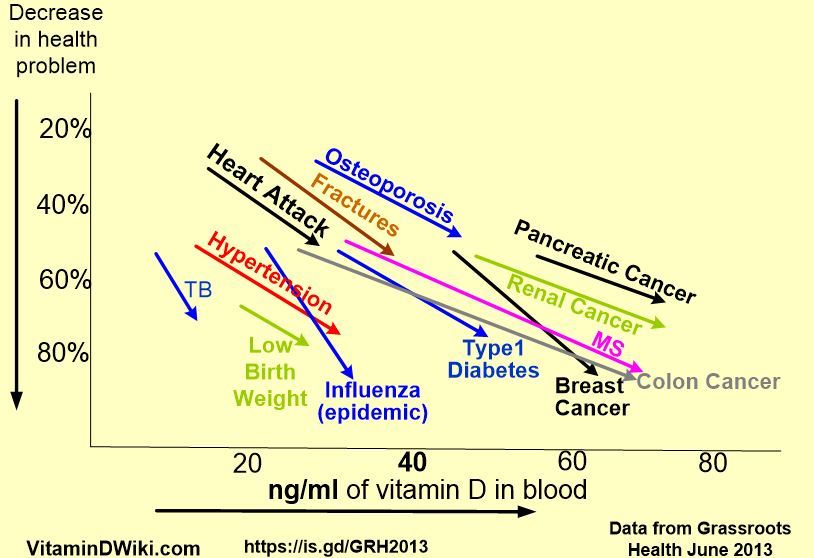 ---
Items in both categories Cancer and Infant-Child :
{category}
---
1. # I will not be surprised if in the future they stop pushing Vitamin D
They are given too little vitamin D, too late to make much of a difference
---
Items in both categories Cancer and Infant-Child :
{category}
---
1. # I will not be surprised if in the future they stop pushing Vitamin D
They are given too little vitamin D, too late to make much of a difference
📄 Download the PDF from VitaminDWiki
Note:Most are weekly supplementations
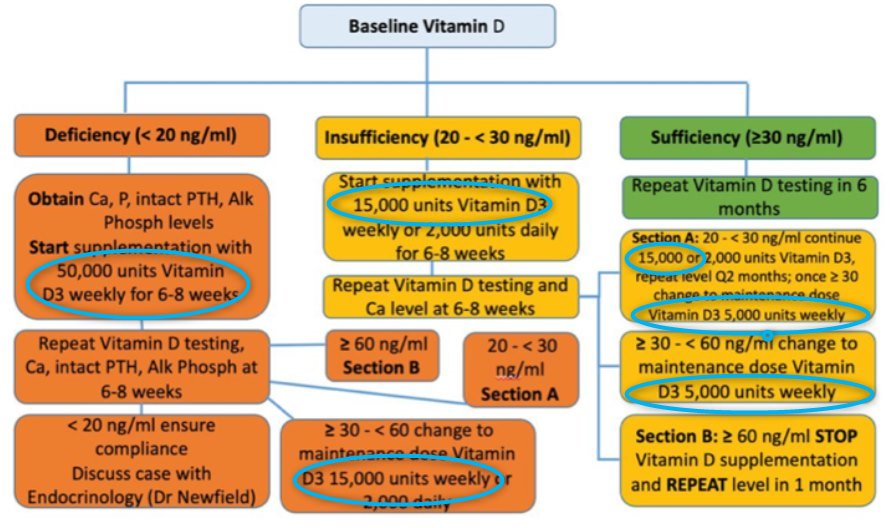
Amazingly, they do not increase dose size with age: An 18 year-old needs much more than a 2 year-old
Increased testing
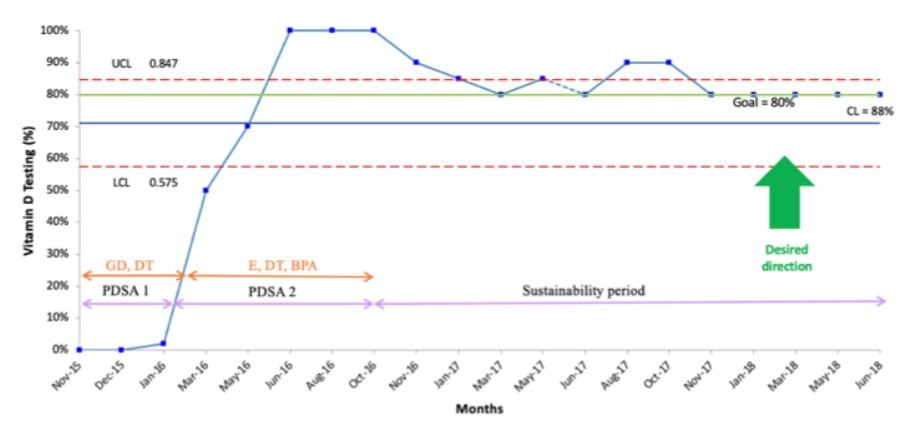
Increased supplementation
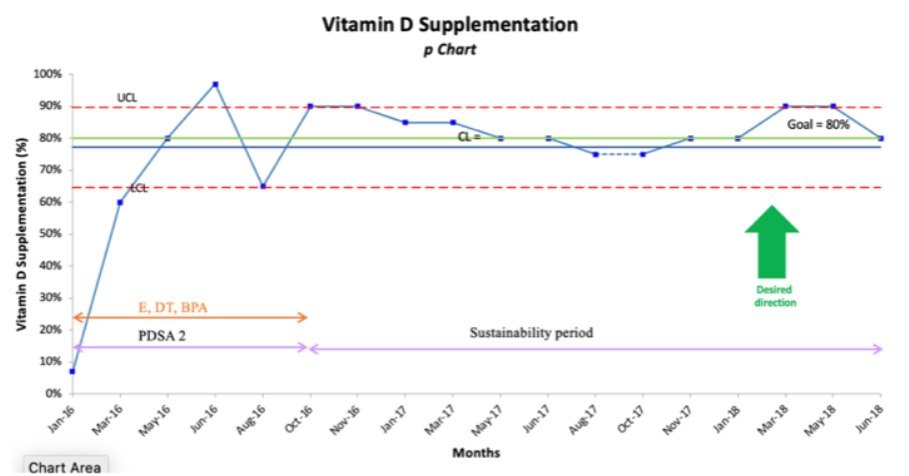
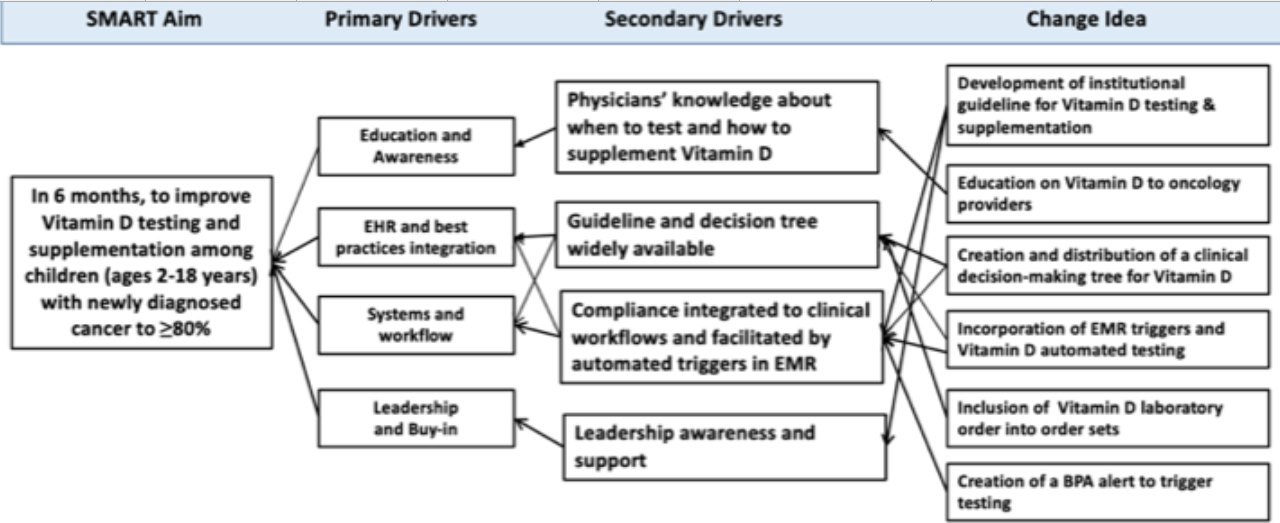
Background: Vitamin D deficiency and insufficiency have been associated with poorer health outcomes. Children with cancer are at high risk for Vitamin D deficiency and insufficiency. At our institution, we identified high variability in Vitamin D testing and supplementation in this population. Of those tested, 65% were Vitamin D deficient/insufficient. We conducted a quality improvement (QI) initiative with aim to improve Vitamin D testing and supplementation among children aged 2-18 years old with newly-diagnosed cancer to ≥ 80% over 6 months.
Methods: An inter-professional team reviewed baseline data, then developed and implemented interventions using Plan-Do-Study-Act (PDSA) cycles. Barriers were identified using QI tools, including lack of automated triggers for testing and inconsistent supplementation criteria and follow-up testing post-supplementation. Interventions included an institutional Vitamin D guideline, clinical decision-making tree for Vitamin D deficiency, insufficiency and sufficiency, electronic medical record triggers, and automated testing options.
Results: Pre-intervention: N=26 patients, four (15%) had baseline Vitamin D testing; two (8%) received appropriate supplementation. Post-intervention: N=33 patients; 32 (97%) had baseline Vitamin D testing; 33 (100%) received appropriate supplementation and completed follow-up testing timely (6-8 weeks post-supplementation). Change was sustained over 24 months.
Conclusions: We achieved and sustained our aim for Vitamin D testing and supplementation in children with newly-diagnosed cancer through inter-professional collaboration of hematology/oncology, endocrinology, hospital medicine, pharmacy, nursing, and information technology. Future PDSA cycles will address patient compliance with Vitamin D supplementation and impact on patients’ Vitamin D levels.
